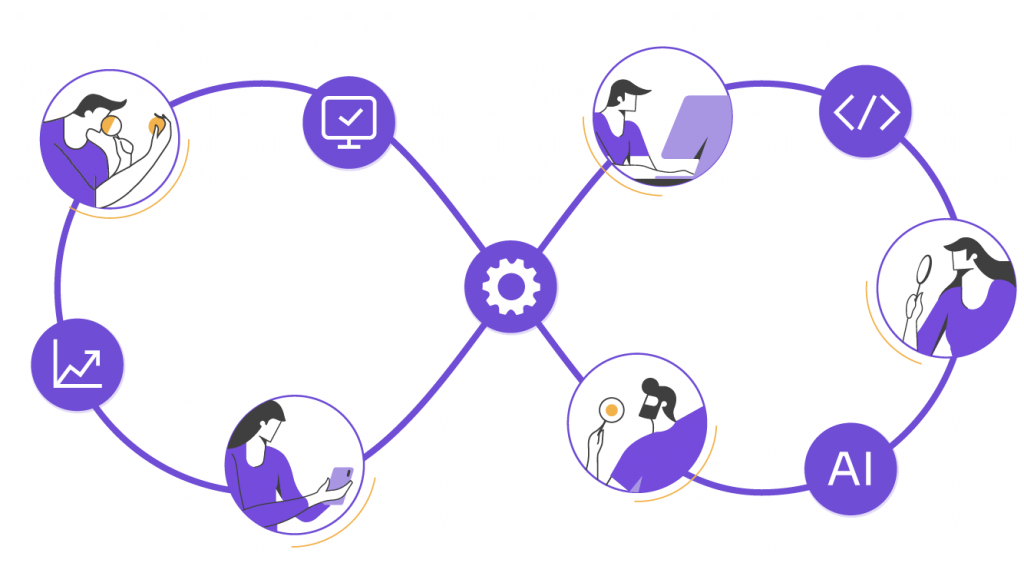Apply these 7 proven strategies for your reliability test system to cut failures, speed releases, and strengthen software products in any industry.


Six months ago, a fintech company launched a complex platform without a single major incident. Not luck — a deliberate reliability test system that caught dozens of hidden issues before release.
If your reliability work only starts before launch, it’s already too late. Failures hide in plain sight during design, in overlooked test cases, and in skipped performance testing. Here’s how to find them before your users do.
What is a Reliability Test System?
A reliability test system is a structured way to run reliability testing and measure how a system performs over a specified period without failure. It uses methods like software reliability testing, load testing, and performance testing to uncover failure modes and improve software reliability.
Key Takeaways
- Start early: Shift left. Integrate reliability checks from the first design draft.
- Mix methods: Blend software testing, load testing, stress testing, and performance testing.
- Make data your feedback loop: Use test results, failure rate metrics, and prediction modeling to adapt continuously.
7 Proven Strategies for Reliability Test System
1. Start Reliability Testing in the Design Phase
- Add software reliability testing requirements to early documentation.
- Define failure rate thresholds before the first line of code as a measurable objective.
- Plan test cases for functionality, stability, and decision consistency.
Pro Tip: Move one planned test to an earlier phase — catching new defects or a new feature bug before coding is complete often saves weeks of rework.
2. Apply IEEE Reliability Test System Standards
- Use IEEE reliability test system guidelines for prediction modeling and reporting.
- Align vendors and testers on consistent methods and metrics.
- Reference standards when building acceptance criteria for a software product or power systems.
Pro Tip: Embedding IEEE standards into your process lets you track progress and compare test results across projects without manual data cleanup.
3. Use Layered Testing Types for Full Coverage
- Combine feature testing, load testing, and stress testing with regression testing.
- Rotate coverage to avoid testing the same software applications repeatedly.
- Add different types of performance testing to measure speed and resource use under real-world usage.
Pro Tip: A layered approach exposes more failure modes and provides examples that no single testing type alone can deliver.
4. Build Robust and Repeatable Test Cases
- Document inputs, expected outcomes, and timing for each reliability test.
- Keep previous tests for baseline comparison.
- Include known bugs, common failure modes, and complexity levels in your suite.
Pro Tip: Version-control test cases like source code — it makes repair work faster when new features break something old.
5. Monitor Reliability in Real Time
- Set up continuous tracking for errors, failures, and usage trends.
- Monitor failure rate, error rates, and cost impact in live environments.
- Create alerts for performance drops or unusual data spikes.
Pro Tip: Get to know our Datadog Professional Services. Real-time monitoring turns your testing process into a continuous improvement loop that can verify stability after each change.
6. Simulate Real-World Failure Modes
- Reproduce memory leaks, temperature extremes, and data surges.
- Apply scenarios to both software and power systems.
- Test extreme conditions that go beyond standard acceptance tests to find suitable improvements.
Pro Tip: Regularly simulate chaotic conditions, setting the frequency based on system criticality, release pace, and risk level. This exposes weaknesses that your normal testing might never reveal.
7. Document, Analyze, and Evolve
- Record test results, methods, and features tested for each cycle.
- Compare with previous tests to track improvement or decline— reliability testing plays a key role in identifying long-term trends.
- Share findings to drive better software reliability decisions and inspire developed solutions.
Pro Tip: Use documentation for more than record-keeping. Leverage it to support process improvements, root cause analysis, and budget justification with an adequate amount of detail.
Wondering how strong your current reliability test system really is? Get a free 30-minute assessment from our experts. Book your assessment.
Turning Reliability Testing into a Strategic Asset
Reliability work isn’t just “insurance” against failures. A strong reliability test system boosts release speed, reduces firefighting, and builds trust with stakeholders. It becomes part of your competitive edge, the thing that lets you launch confidently while others scramble to fix what they missed.
When your testing process is integrated, data-driven, and adaptive, it prevents failures and also creates space for innovation. That’s where the real ROI lives.
Want these strategies implemented? Our team builds and optimizes reliability test systems for global companies — including fintech, healthcare, e-commerce, and other industries.
Let’s talk.
FAQs – Reliability Test System & Software Testing


What Is a Reliability Test System?
A reliability test system is a structured framework used to evaluate how well a product, software, or system performs under specific conditions over a specified period without failure.
How Does Reliability Testing Help in Software Development?
Reliability testing helps identify failure modes, reduce failure rate, and ensure reliable software delivery within the software development lifecycle.
What Types of Software Testing Improve Reliability?
Common types include software reliability testing, performance testing, load testing, stress testing, feature testing, and regression testing.
What Is Performing Reliability Testing?
Performing reliability testing means running planned tests to assess durability, functionality, and stability under both normal and extreme conditions. Systems must perform as expected in both cases.
What Role Does the IEEE Reliability Test System Play?
The IEEE reliability test system provides standardized methods and datasets for prediction modeling, decision consistency, and performance assessment.
What Is Test Retest Reliability?
Test-retest reliability measures consistency by repeating the same tests over time and comparing results.
Can You Give an Example of Reliability Testing?
Reliability testing examples are targeted tools, scripted scenarios, and repeatable methods that expose weaknesses and help track improvements.
How Do You Verify a New Feature?
To verify a new feature, combine functional testing with performance and load testing while monitoring for failure modes.
How We Can Help You


With over 17 years of experience and a global presence, Abstracta is a leading technology solutions company with offices in the United States, Chile, Colombia, and Uruguay. We specialize in software development, AI-driven innovations & copilots, and end-to-end software testing services.
We believe that actively bonding ties propels us further and helps us enhance our clients’ software. That’s why we’ve built robust partnerships with industry leaders Microsoft, Datadog, Tricentis,
Perforce BlazeMeter, and Saucelabs to provide the latest in cutting-edge technology.
Want to know where your testing process really stands?
Take our software testing maturity assessment and check our solutions!


Follow us on LinkedIn & X to be part of our community!
Recommended for You
Why SRE? The Essential Role of Site Reliability Engineering
What is Throughput in Performance Testing? Your Ultimate Guide


Sofía Palamarchuk, Co-CEO at Abstracta
Related Posts
3 Keys to a Successful Continuous Testing Implementation
Unless you’ve been hibernating for the past decade or two, I’m sure you have already become well aware of the benefits of continuous testing: reduced cost of development, less waste, improved system reliability, reduced risk upon release, and so on. Of course, putting it into…
Quality Sense Conference Returns in a New Edition
It’s Quality Sense Conference time in Chile! The event will tour Latin America, with speakers from different parts of the world and a focus on quality software development. Be prepared for two days of great learning and networking, in person and virtually, on November 9…
Search
Contents








